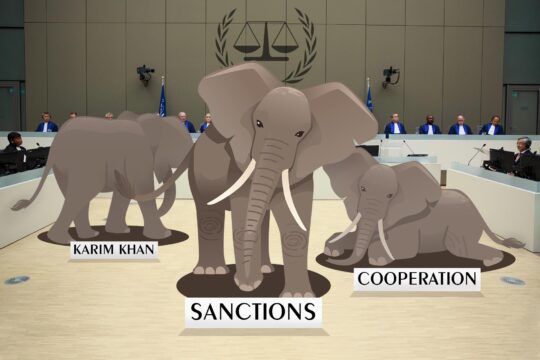Arusha, February 23, 2007 (FH) – The Rwandan Senate just voted on a law whose application would eventually permit the reduction in the size of its inmate population, currently estimated at more than 60,000 detained individuals, nearly all of which are accused of having played a role in the 1994 genocide. This new text modifies the organic law in semi-traditional gacaca jurisdictions which are in charge of trying the majority of the suspects of the genocide. The gacacas have no jurisdiction over suspects of “the first category,” the planners of the genocide and the orchestrators of the rapes. The new law is on the verge of being set into law by the head of state, redefining “the planners” so that the only people placed in that category would be “those responsible for genocide at the highest level, the high-ranking planners,” explained the Minister of Justice, Mr. Tharcisse Karugarama, to L’Agence Hirondelle. As a result, a number of suspects currently classified in the category of planners would be placed in the second category, which would fall as a result under the jurisdiction of the gacacas which can pronounce a maximum punishment of 30 years of prison, of which the first half would be spent in detention and the other spent working in the public interest. The new law introduced also introduces probation, which the minister explained, aims to reduce the number of prisoners. “We cannot forever keep thousands and thousands of prisoners: governance sometimes entails making difficult choices,” explained Karugarama, reached by telephone from Arusha. The promulgation of this law occurred after the release at the beginning of the week of some 9,000 prisoners, almost all accused of genocide. The Rwandan authorities maintain that this was not an amnesty but simply following the law. “We have freed around 9,000 prisoners. They are currently in solidarity camps,” Karugarama said. The prisoners will leave the solidarity camps (ingando, in Rwandan) in two months to return to their families. During this period they will take courses in civil education. The freed prisoners will be the very sick, the very old, and those who have confessed or those who would have already served the majority of their sentence. This wave of release takes place at the moment where across the country, persons previously freed in the same conditions have been accused of putting genocide survivors’ lives in danger. According to the Ministry, depositions have been taken so that these prison releases will not be the cause of insecurity. In 2003, more than 20,000 prisoners, principally genocide suspects, have been freed, followed by nearly 30,000 in 2005. PB/ER/KD © Hirondelle News Agency
Countries
- Afghanistan
- Algeria
- Angola
- Argentina
- Armenia
- Australia
- Austria
- Azerbaijan
- Bahrain
- Bangladesh
- Belarus
- Belgium
- Benin
- Bosnia & Herzegovina
- Brazil
- Burkina Faso
- Burundi
- Cambodia
- Cameroon
- Canada
- Central African Republic
- Chad
- Chile
- China
- Colombia
- Cote d’Ivoire
- Croatia
- Cyprus
- Dem. Rep. Of Congo
- Denmark
- Ecuador
- Egypt
- El Salvador
- Equatorial Guinea
- Eritrea
- Ethiopia
- Finland
- France
- Gabon
- Gambia
- Georgia
- Germany
- Ghana
- Greenland
- Guatemala
- Guinea
- Haiti
- Honduras
- Hungary
- Indonesia
- Iran
- Iraq
- Ireland
- Israel
- Italy
- Japan
- Jordan
- Kenya
- Kosovo
- Laos
- Lebanon
- Liberia
- Libya
- Lithuania
- Malaysia
- Maldives
- Mali
- Mauritania
- Mauritius
- Mexico
- Myanmar
- Namibia
- Nepal
- Netherlands
- New Zealand
- Nicaragua
- Niger
- Nigeria
- North Korea
- Norway
- Pakistan
- Palestine
- Peru
- Philippines
- Poland
- Republic of Congo
- Russia
- Rwanda
- Scotland
- Senegal
- Serbia
- Seychelles
- Sierra Leone
- Somaliland
- South Africa
- South Korea
- South Sudan
- Spain
- Sri Lanka
- Sudan
- Suriname
- Sweden
- Switzerland
- Syria
- Taiwan
- Tanzania
- Thailand
- Timor-Leste
- Togo
- Tunisia
- Turkey
- Uganda
- Ukraine
- United Arab Emirates
- United Kingdom
- United States
- Uruguay
- Vanuatu
- Venezuela
- Vietnam
- Yemen
- Zimbabwe



